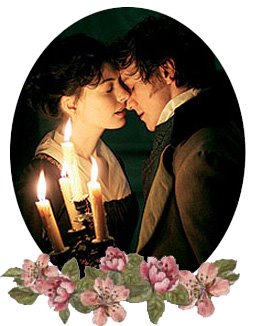Mourning a Manor

First, I would like to welcome Rachel home after completing her Mission to Ireland succesfully. You will hear from her of her magnificent adventures there shortly. I also would like to thank our dearest Librarian Linda for finding this 2005 Times Online article for us. It's about the decision behind selling Carrigglas Manor to a hotel developer. I admit that I was very sad to learn that Carrigglas was turned into a hotel, but I understand that it's never easy to manage such a large manor (40 rooms!) in this century. Hence, here's a tribute to Jeffry and Tessa Lefroy who had taken care of Carrigglas for almost 30 years.
Ireland: Mourning a Manor
After years of struggling to maintain their family seat, Tessa Lefroy describes how she and her husband are bidding it farewell — and they feel bereaved.
The first time I set eyes on Carrigglas Manor was on a dark, wet day in the summer of 1967. In the driving rain, the large castellated edifice loomed up rather like something out of
It was new to me but of course not to my husband, Jeffry, whose family had owned it since 1810. We were there to visit Jeffry’s cousin, Phoebe, as part of a tour of the Irish relations and to show off the new son and heir. Little did we know that she had other ideas. Early in 1972, Phoebe announced that she was moving to something smaller. Carrigglas would be our home for the next 29 years.
The next time we visited, the house had been vacant for a few months. We soon discovered that unless lived in, its deterioration would be alarmingly swift. On our arrival, it felt dank and chilly, with a pervading odour of decay. We must be mad, I thought, coming back home to
The situation in the north seemed to have spread its tentacles throughout the whole of
Not wanting to give in to intimidation we visited the house regularly, returning during the summers to do the hay and other farm work.
I moved in permanently in 1976, six months before Jeffry, and was promptly advised by a prominent local citizen to “keep a low profile”. I heeded the advice, which, in hindsight, was a mistake, because it was years before I got to know my neighbours. This was a loss to me because when Jeffry was away on farm or forestry business, life was often lonely — unintentionally I gave the impression of being grand and unapproachable behind my big walls.

It was painstaking. The background of the cornice in the drawing room alone took four months to complete, but although I say it myself, some of the results were magnificent.
In 1985, we opened to the public and a couple of years later began taking in paying guests under the auspices of Hidden Ireland. This was the brainchild of John Colclough, where holidaymakers were welcomed into the great private houses of
As we became practised, the dinners became more resplendent both in taste and elegance. Soon we were living in a style to which we had never been accustomed. In our heyday, as many as eight coaches arrived per week to be entertained by Jeffry’s unique guided tours of the house followed by lunches in the tearoom and a tour of the gardens. Business appeared to be booming.
It didn’t last. After about 14 years, a period when tourism in
Our labour costs were increasing so we had to dispense with the staff — what had been exhilarating in the beginning became exhausting. We worried constantly. Jeffry was combining farm work, ever-increasing paperwork and his role as “front of the house”, while I looked after the horses, kept the gardens and cooked. The hardest thing was turning up for dinner with guests every evening pretending I had spent the day arranging flowers.
After an emergency family conference, we decided that our job was simply impossible. We reasoned that the only way for the house to survive was to sell it to somebody with the resources to look after it properly. This was a particular blow to Jeffry. As titular head of the Lefroy family worldwide, he felt he was the custodian of the ancestral home. It seemed that 29 years of labour had been to no avail.
The house has such a magnificent history. It was built in 1837 by Thomas Lefroy, an inamorato of Jane Austen and the inspiration for Mr Darcy in Pride and Prejudice. When it was built it was the height of modernity, perhaps the earliest Victorian house in
Fortunately, our relations were magnificent when we told them of our plans, praising us for what we had done and for giving so many years of pleasure to so many people.
In the past century, the same fate has befallen hundreds of country estates. Indeed, many of them have met a much worse fate, either being razed to the ground or left to ruin. Thankfully, Carrigglas’ future is secure: it is going to be turned into a country house hotel development with new homes in the grounds. The planning laws are now so strict that the house and yards must be restored to their former glory.
The long, drawn-out process of leaving it can only be compared to that of living out the last days with a terminally ill, dearly loved relation. Our final family gatherings have been like wakes — a mixture of nostalgia and fun punctuated by stabbing moments of grief.
Sorting out the family chattels of 200 years or more is an onerous task. Some will stay with the house but many will come with us. The day-to-day things — old photographs, letters and other intimate objects, the inventory of a family — are the problem. Everything has to be labelled, so we know where it came from and where it belongs. There are 40 rooms to empty, and Jeffry and I can’t agree on anything. We have more than 100 boxes of family archives to be housed where relatives can see them, and we shall need a certain amount of wall space on which to hang family portraits.
We thought we had found a dream house not far away but we were gazumped. What we need is a place we can manage as we get older.
As the dreaded day of departure looms we are homeless — though certainly not bereft of belongings. What shall we do with the horses or the peacocks and ducks, the only stalwarts to escape the fox? We hope we will find the perfect property in
Pic 1 : Aerial view of Carrigglas Manor from Carrigglas of Longford
Pic 2: Carrigglas Manor, from Carrigglas of Longford
Pic 3: The drawing room of Carrigglas Manor
Pic 4: Jeffry and Tessa Lefroy, from the archives of Carrigglas Manor website
Pic 5: The large complex of hotel and houses in Carrigglas, from Carrigglas of Longford















































10 comments:
What a great article! I thought along the same lines as Michelle--maybe there might be some books (or letters!!!) hidden among the old Lefroy possessions...
I know that, Ladies ^_^
Is it not exciting to be able to take a sneak peek into some of Tom's books and letters? Oh... if only we can contact them... (wink to Rachel)
On TL's portraits, so far we have only three: the gorgeous young one in colour, the bald middle age man, and the Chief Justice with the wig. I would not mind more portraits of him when he's in mid 30s...
So they're leaving the place? Makes me quite sad.
Wonderful article. Thanks for being such a dogged fan of Jane Austen.
I can only imagine the expense and sheer hard work of maintaining such a home. Seems the only person who could possibly afford to own and live in something like this is Bill Gates or Oprah!
Awww... thanks Kanani. Yeah, we're hopelessly dogged fans here... can't help it...
And yes, I completely understand the weight of managing such a HUGE estate... hence their decision.
I grew up here, my granny and grandad lived in the gate lodge and my grandad worked first for phoebe lefroy and then for the major. It was a truly beautiful magical place and breaks my heart to see what has happened to it since its sale
A shame she made no mention of the staff who lived on the grounds and lived carrigglass just as much as its owners over 20 years of my life were spent there and to see the decay it had fallen into is utterly heartbreaking
I have just seen this article on Carrigglas Manor from 2005 - I worked as a Tour Guide for nearly 10 years,ran the gift shop,helped out in the tea rooom etc - I loved every minute of my time there and made some good friends. I loved the house and its connection with one of my most favourite authors - Jane Austen. I cried when I saw the video taken of the inside of the Manor House, totally derelict and in ruin. These grand houses are part of the Irish Heritage, whether people like it or not, and this house should have been protected.
However, I am extremely disappointed and sad that Tessa Lefroy made no mention of the staff that worked in the tea rooms and main house - all of us worked very hard to make the place welcoming to the many tourists that visited the house over the years - in fact, without the staff, the house would not have been able to open as a tourist destination. An acknowledgement of this work and dedication should have been acknowledged.
Crea Nolan I completely agree, you must have known my grandparents then, mr and Mrs Quinn who lived in tthe farm gate house for over 49 years and both worked there , I was very disappointed that the staff were not mentioned
Im a direct descendant of the LeFroy family, we have unfortunately not been allowed to see any of the papers pertaining to my side of the family, such a shame.
Post a Comment